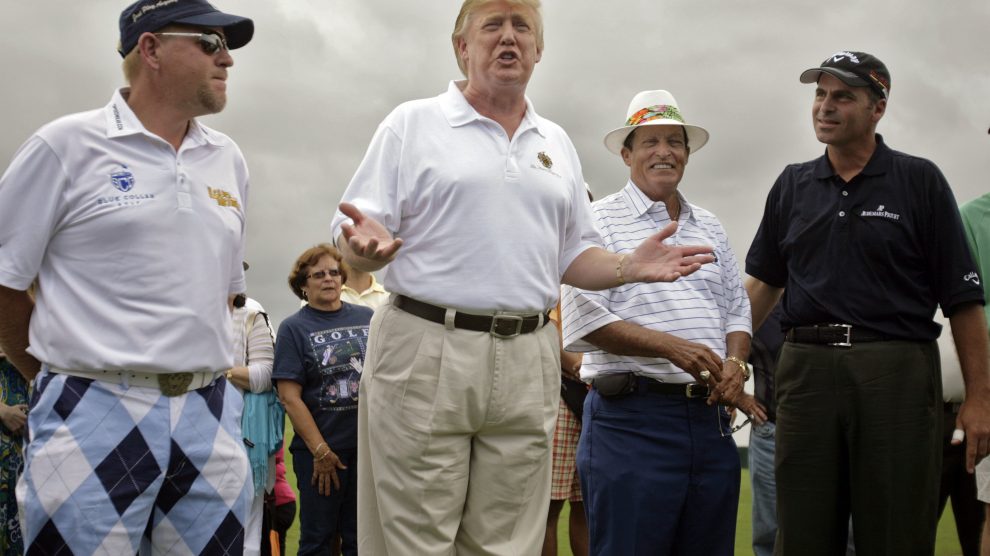With the Republicans kicking off the process of trying to get tax cuts and some modest reform through both chambers of Congress and onto President Donald Trump's desk, there has been some deserved and natural scrutiny of the competing House and Senate plans. Everyone has their favorite tax break, and there's so much money that goes behind fighting changes to them.
There have also been reporters and advocates looking to see how the proposed changes would benefit Donald Trump. After all, he has claimed (rather boldly and dishonestly) that these changes could actually hurt him and his family business. The potential abolition of the estate tax, the lowered rates for pass-through companies like LLCs and a big drop in the corporate tax rate will all help Trump and his family substantially. However, a particular write-off has some on the left particularly annoyed: a break Donald Trump can use dubbed the golf course deduction.
Bloomberg looked into the golf course deduction. Basically, the deduction comes in the form of a tax write-off in exchange for creating "environmental easements," with golf course owners claiming they won't further develop their courses and preserve them as green space in perpetuity by donating the land to a government or conservation trust while maintaining ownership of it. In exchange for claiming this easement and eschewing further development -- it's already developed anyway since it's a golf course -- golf course owners like Trump get to claim a big tax break, in the amount of the difference between the appraised value of the land as a golf course and as a fully developed tract of land.
How big is this tax credit? The Obama administration claimed abolishing this write-off could mean $600 million over 10 years. Outgoing Arizona Senator Jeff Flake targeted this loophole in a published tax paper in 2017. These deductions can be used to fuel other housing construction or pay for other projects. The intended purpose, however, is to preserve green space.
Trump has claimed these easements on at least four of his properties, including Trump National Golf Club in New Jersey, according to the Wall Street Journal.
While the deduction looks bad, and it has seemingly been used in ways unintended by lawmakers, the overall value of the loophole to the golf industry appears minimal. Estimating $60 million per year and approximately 14,000 golf courses in the United States as of 2016, each golf course would claim $4,250 in this loophole. However, it's unclear how many facilities in the US use this loophole.

